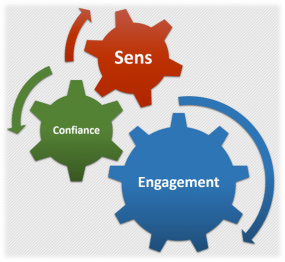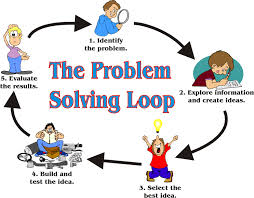Vie, collectif, groupe, équipe et âme
Vie, collectif, groupe, équipe et âme
Fédérer
Fédérer.
Fédérer l’ensemble du groupe sur un projet commun.
Faire que ce groupe soit le jour J plus fort que l’adversité, qu’il sache donner le meilleur de lui-même sans douter
en lui-même, sans perdre confiance.
Savoir forger une âme de groupe.
Un exemple, le groupe de Mr Aymé JACQUET pendant la Coupe du Monde de Football en 1998 et son
comportement lors de la demi-finale.
Que s’est-il passé pendant ce match ?
Lilian THURAM, modèle de professionnalisme et de régularité, irréprochable et exemplaire, fait une grosse erreur
de défense, la Croatie marque et la France est menée 1-0.
La France est en train de perdre sa demi-finale.
Lilian THURAM marque ce jour-là ses 2 premiers buts internationaux, lui qui n’avait encore jamais marqué en
match international.
Ce sera d’ailleurs ces 2 premiers buts mais aussi ces 2 derniers.
Pourquoi arrive t-il ce jour-là à marquer ces 2 buts ?
Parce qu’il était en confiance et qu’il avait senti une force énorme générée par le collectif.
Force accumulée en amont par la vie du groupe pendant la préparation commune.
Personne ne doutait, ni ses équipiers sur le terrain, ni ceux sur le banc de touche, ni ceux restés en tribune.
Et pas même le coach Aimé JACQUET, ni le staff.
Ce n’est pas le talent qui fait gagner, ni le travail technique, ce ne sont que des pré-requis indispensables, plein
d’équipes possèdent ce bagage minimum à toute aventure collective.
C’est la faculté à forger une âme pour le groupe, le transformer en véritable équipe.
Ame qui lui permettra de renverser les pires situations, de vaincre les difficultés.
C’est en cela que la vie commune et ce qui s’est passé en amont permettent de gagner les grandes compétitions.
C’est la fraîcheur mentale.
Fraicheur mentale qui englobe à la fois, l’envie, l’enthousiasme, la cohésion …
C’est cette fraîcheur mentale et cette force collective qui font la différence dans l’adversité.
C’est ça la VIE.
Quoi de plus beau que la VIE et le monde du Vivant!
…
V.I.E. = Volonté, Intelligence collective, Envie / Energie
…/…










